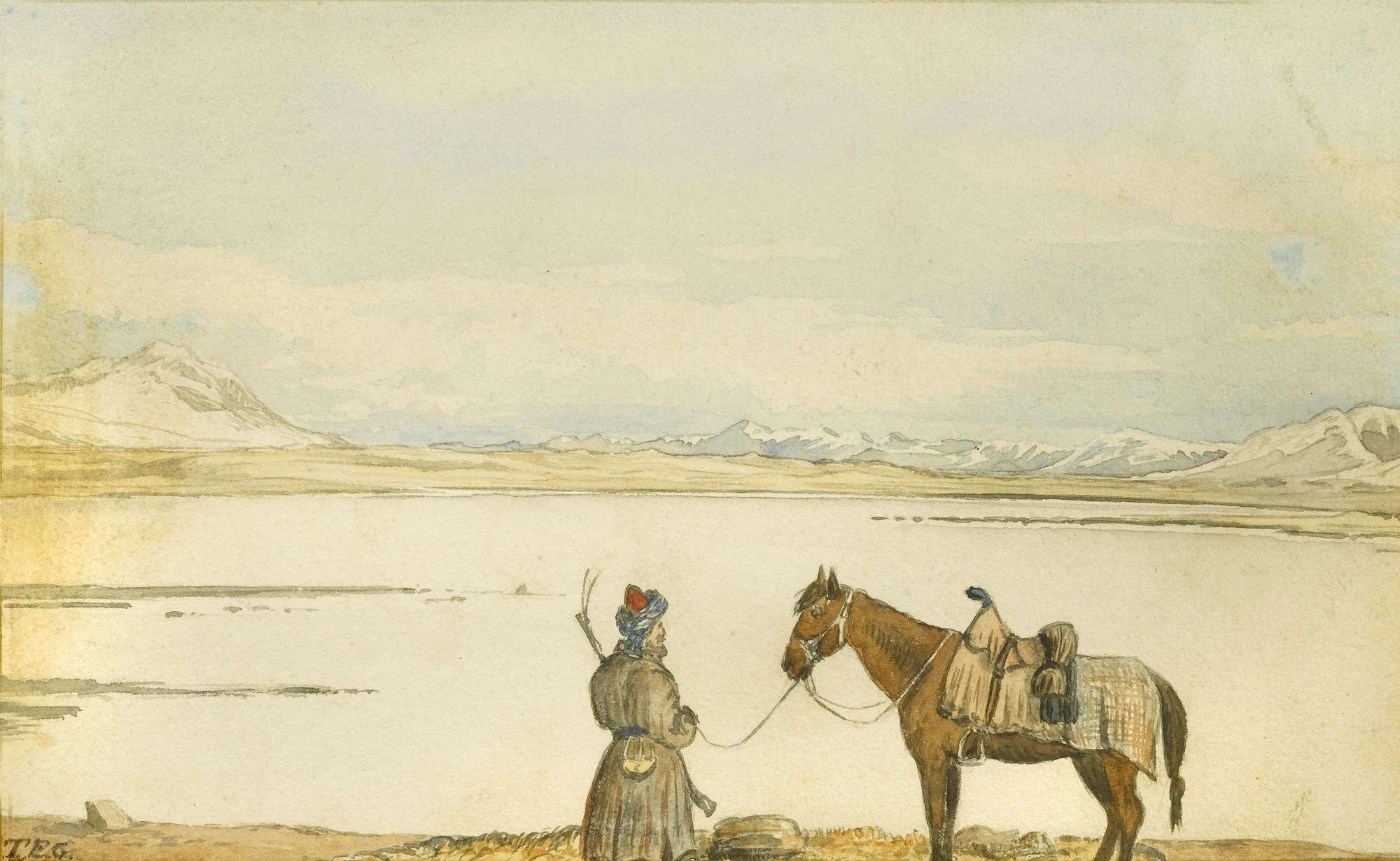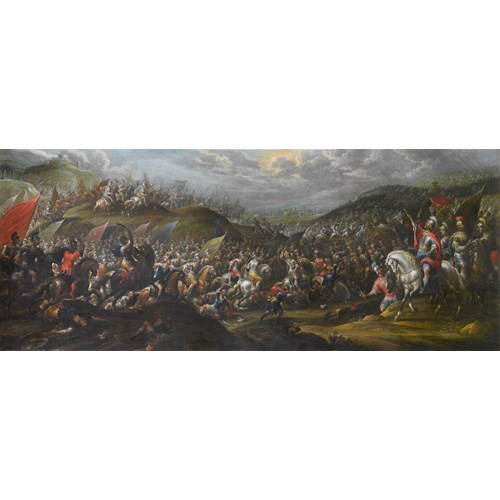Sir Thomas Edward Gordon
Lake Victoria, Great Pamir
Date May 2nd 1874
Period 1850-1900, 19th century
Origin Scotland
Medium Watercolour on paper
Dimension 15.2 x 24.1 cm (6 x 9¹/₂ inches)
Gordon’s expedition travelled from Leh on the Indus, across the Karakoram to the little explored region of eastern Turkestan, carrying out map-making for the army and playing a vital role in what would become known as ‘The Great Game’, in the High Asian buffer zones between the British and Russian empires. Gordon wrote, ‘my book... makes no pretension to be in any way a record of scientific exploration: it merely relates to what fell under “every-day” observation... The idea of writing it was suggested by my sketches forming such a complete series “from the Indus to the Oxus” as to merit publication simply on the ground of representing to a very great extent life and scenery never before pictured... The whole of the illustrations (with the exception of four coloured plates) are facsimile copies of my sketches made on the spot.’¹
Gordon was born on 12th January 1832 in Aberdeen and was a twin son of Captain William Gordon (1788-1834) of the 2nd Queen’s Royal Regiment. His father served in the Peninsular War in Spain, and was married at Santarem, in 1818, to Marianna Carlotta Loi, daughter of Lois Congalvea de Mello, a government official in the province of Estremadura. Alongside his twin brother, Sir John James Hood Gordon, Thomas entered the army, joining the 29th Regiment of Foot on 21st August, 1849, and served in the Indian Mutiny campaign of 1857-1858. He subsequently became Military Attaché and Oriental Secretary to Her Majesty’s Legation in Tehran. During his visits to Persia he decided to publish an account of his journey with the intention of displaying, through his observations and illustrations, evidence of the ‘progress and improvement’ he found. In 1896 his work, Persia Revisited, was published. He died in 1914.
¹ Lieut. Col. T.E. Gordon, (see Literature), pp. v-vi.
Date: May 2nd 1874
Period: 1850-1900, 19th century
Origin: Scotland
Medium: Watercolour on paper
Signature: Signed with initials ‘T.E.G.’ (lower left)
Dimension: 15.2 x 24.1 cm (6 x 9¹/₂ inches)
Literature: Lieut. Col. T.E. Gordon, C.S.I., The Roof of the World, being the Narrative of a Journey over the high plateau of Tibet to the Russian frontier and the Oxus sources on Pamir, 1876, p. 155, [‘Great Pamir (Victoria) Lake - Eastern End’]
More artworks from the Gallery









